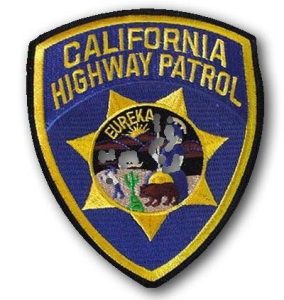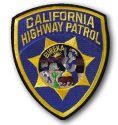While many Mother Lode residents enjoy the Christmas Holiday weekend, the California Highway Patrol will be out in full force in both Tuolumne and Calaveras Counties.
C.H.P. Officer and Spokesperson Randy Matyshock of the Tuolumne County office, was Friday’s KVML “Newsmaker of the Day”.
Maximum Enforcement begins at 2 PM this afternoon and will continue through midnight on Monday (Christmas Day). This will be repeated again next weekend from Friday December 29th through Monday January 1st (New Year Day).
Specific attention will be paid to those not obeying the speed limit, distracted driving, those suspected of driving under the influence and those who are not wearing their seatbelts.
Matyshock says all officers will be on the lookout for any type of erratic driving from any two-wheeler, four wheeler or even eighteen wheeler.
The final word from the C.H.P. … drive safe and buckle up!
Although no snow is expected some drivers will need a refresher course for driving in winter conditions.
Before the snow arrives, make sure your brakes, windshield wipers, defroster, heater and exhaust system are in top condition. Check your antifreeze and be ready for cold temperatures this weekend.
You may need to add concentrated windshield washer fluid to the windshield washer fluid reservoir to prevent an icy windshield. More information about this type of windshield washer fluid can be found on the California Air Resources Board web site.
Check your tires and make sure they are properly inflated and the tread is in good condition.
Always carry chains when driving to the higher elevations. Make sure they are the proper size for your tires and are in working order. You might want to take along a flashlight and chain repair links. Chains must be installed on the drive wheels. Make sure you know if your vehicle is front or rear wheel drive.
Other suggested items to carry in your car are an ice scraper or commercial de-icer, a broom for brushing snow off your car, a shovel to free you car if it is “snowed in”, sand or burlap for traction if your wheels should become mired in snow and an old towel to clean your hands. It is also a good idea to take along water, food, a cell phone, warm blankets and extra clothing.
Put an extra car key in you pocket. A number of motorists have locked themselves out of their cars when putting on chains and at ski areas.
When driving in winter conditions, allow enough time. Trips to the mountains can take longer during winter that other times of the year, especially if you encounter storm conditions or icy roads. Get an early start and allow plenty of time to reach your destination.
Keep your gas tank full. It may be necessary to change routes or turn back during a bad storm or you may be caught in a traffic delay.
Slow down. A highway speed of 55 miles per hour may be safe in dry weather, but an invitation for trouble on snow and ice. Snow and ice make stopping distances much longer, so keep your seat belt buckled and leave more distance between your vehicle and the vehicle ahead. Bridge decks and shady spots can be icy when other areas are not. Remember to avoid sudden stops and quick direction changes.
When stalled, stay with your vehicle and try to conserve fuel while maintaining warmth. Be alert to any possible exhaust or monoxide problems.
You must stop and put on chains when highway signs indicate chains are required. You can be cited by the California Highway Patrol and fined if you don’t. You will usually have about a mile between “Chains Required” signs and the checkpoint to install your chains.
The speed limit when chains are required is twenty-five or thirty miles an hour.
When you put on chains, wait until you can pull completely off the roadway to the right. Do not stop in a traffic lane where you will endanger yourself and block traffic.
The “Newsmaker of the Day” is heard each weekday morning at 6:45, 7:45 and 8:45 on AM 1450 and FM 102.7 KVML.


